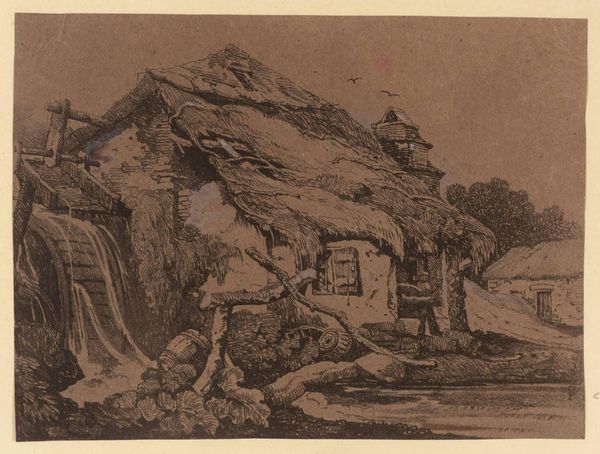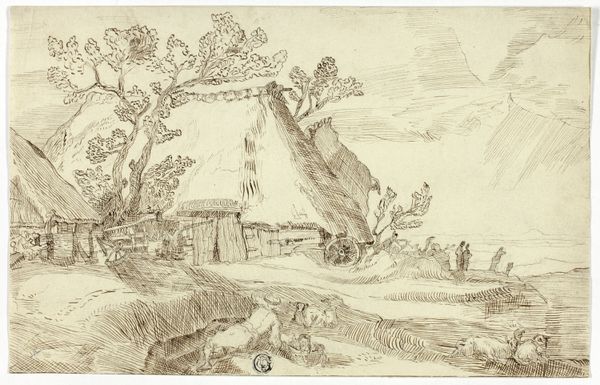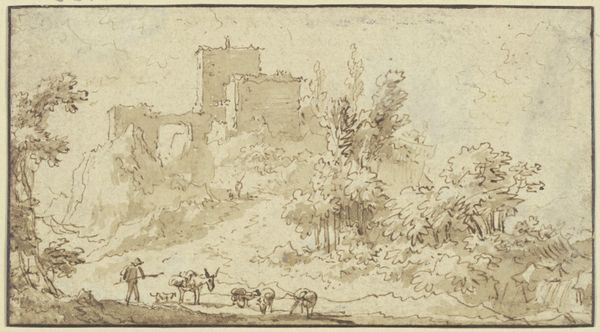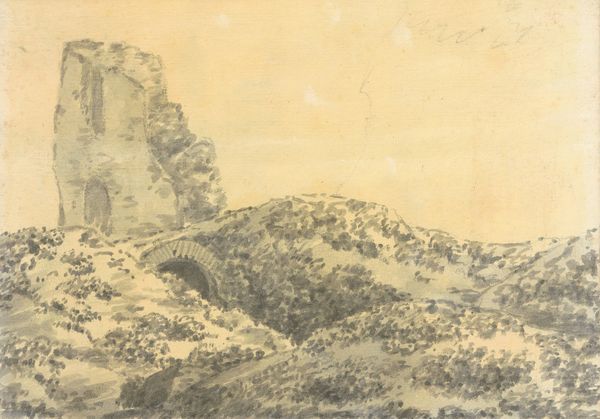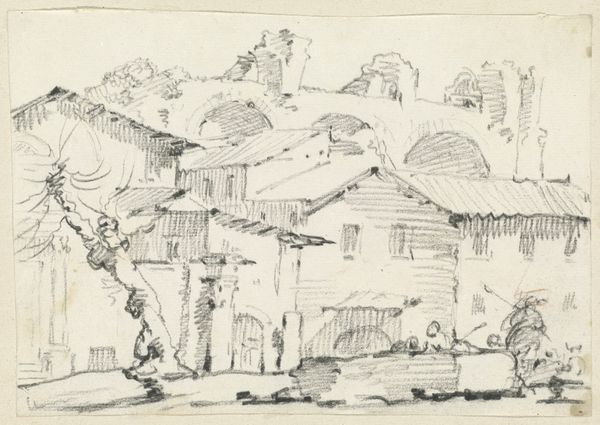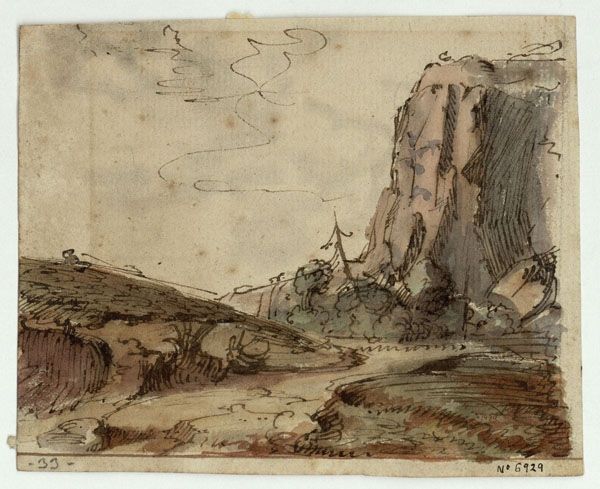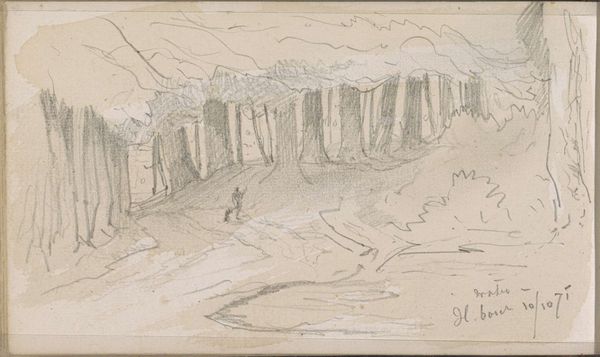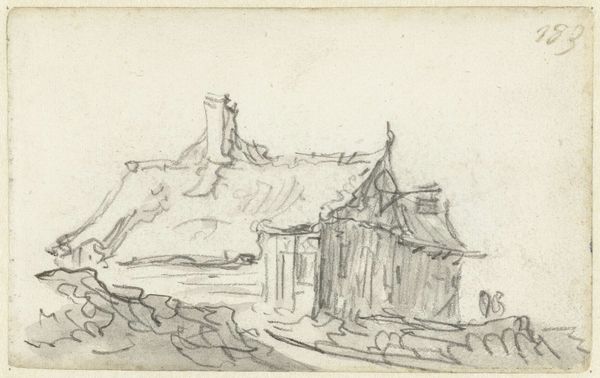
Dimensions: height 120 mm, width 190 mm
Copyright: Rijks Museum: Open Domain
Curator: Here we have Adolf le Comte's "Ruïne te Trier," dating roughly between 1860 and 1921. It's a drawing rendered in pencil and graphite. Editor: Immediately, there's something deeply melancholic about it. It’s like witnessing the slow exhale of an empire, you know? Curator: Precisely! The romantic style is prominent, isn’t it? Note the subject: ruins, decay, a kind of monument to impermanence. This interest in ruins, particularly Roman ruins in places like Trier, really speaks to the 19th-century obsession with the past. The ruins were, for many, a physical link to the grand narratives of European history. Editor: True. And beyond history, there’s also just something innately attractive to humans about entropy. The pencil work creates a feeling of soft erosion that amplifies that, like you can almost hear the dust particles rearranging themselves. It's really more evocative than technically precise. Curator: Well, consider how landscape art, and the depiction of architectural ruins specifically, played a vital role in shaping national identities at the time. Representing Trier as a site of ruins could speak to broader cultural anxieties and romantic glorifications of loss. Editor: Loss as tourism? Maybe the contemporary art market isn't that different after all! I suppose it's always easier to aestheticize from a safe distance, to find the "beauty" in decline, once your own status isn’t in jeopardy. Curator: An interesting, albeit cynical take. Regardless, such drawings fed into larger historical narratives and helped solidify certain cultural identities for both artists and audiences. The rise of tourism also intersects here. Viewers may want to go to the places of those works of art. Editor: Well, if I ever find myself in Trier, I suppose I’ll have to find these specific ruins and measure how they stack up to le Comte’s rendition of the scene. Thanks for sharing some of the socio-political context, I'm actually really feeling this a bit more. Curator: It's been a pleasure delving into it with you. Art offers so much, doesn't it? Editor: Definitely, especially when it can make you ponder both empires and your own inevitable expiration date. Cheerful, right?
Comments
No comments
Be the first to comment and join the conversation on the ultimate creative platform.
